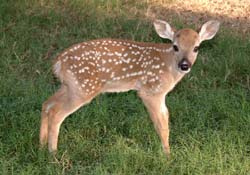Articles and reports from the Life Sciences and chemistry area deal with applied and basic research into modern biology, chemistry and human medicine.
Valuable information can be found on a range of life sciences fields including bacteriology, biochemistry, bionics, bioinformatics, biophysics, biotechnology, genetics, geobotany, human biology, marine biology, microbiology, molecular biology, cellular biology, zoology, bioinorganic chemistry, microchemistry and environmental chemistry.

Corn mutant reveals gene coordinating major steps in meiosis
Berkeley – For all its importance in sexual reproduction, the process of creating eggs and sperm, called meiosis, is still poorly understood.
How the chromosomes in germ cells pair off, trade a few genes and split to give each gamete half a normal complement of genes is so complicated that researchers have had a hard time making sense of the mechanisms involved.
A team of biologists at the University of C

In research published today scientists at the John Innes Centre (JIC), Norwich(1), report on what plants do during the hours of darkness. During daylight hours plants use the energy from sunlight to power the production of food (sugar) from carbon dioxide and water. This process (photosynthesis) is well understood, but what happens when the sun goes down? The JIC researchers have found a previously unknown sugar transport system within plants and this has, for the first time, shed light on what plan

Find opens debate about whether man’s earliest ancestors came from Asia and were diurnal or nocturnal
A skull and jawbones recently found in China is the oldest well-preserved primate fossil ever discovered – as well as the best evidence of the presence of early primates in Asia. But the fossil raises the tantalizing possibility that remote human ancestors may have originated in Asia and stirs up debate about the nature of early primates.
In the words of Robert D. Martin

Biologists unravel part of the mystery behind disappearance of shell material
Chitin, the Earth’s second-most abundant biological material, is a major component in the flurry of skeletal debris discarded daily by crustacean creatures in the world’s oceans. If left undisturbed, this tough insoluble material, a cousin to cellulose, would pile up on the ocean’s floor and wreak havoc with marine ecosystems. Fortunately, armies of bacteria act as chitin’s cleanup crew,

In what is believed to be the first success of its kind, researchers at the College of Veterinary Medicine at Texas A&M University have cloned a white-tailed deer. A fawn, named “Dewey,” after Duane Kraemer, one of the researchers, was born to a surrogate mother several months ago.
The fawn is believed to be the first successfully cloned deer and Texas A&M is the first academic institution in the world to have cloned five different species. Previously, researchers at the College of Veterina

When introduced to the world in 1998, human embryonic stem cells were considered heralds of a new age of transplant medicine. The prospect of an unlimited supply of cells and tissue of all kinds to treat disease captured public imagination and enthusiasm.
But lost in the glitz of the cells’ potential to treat an array of devastating and sometimes fatal diseases was another quality that, when all is said and done, could match even the prospect of remaking transplant technology.